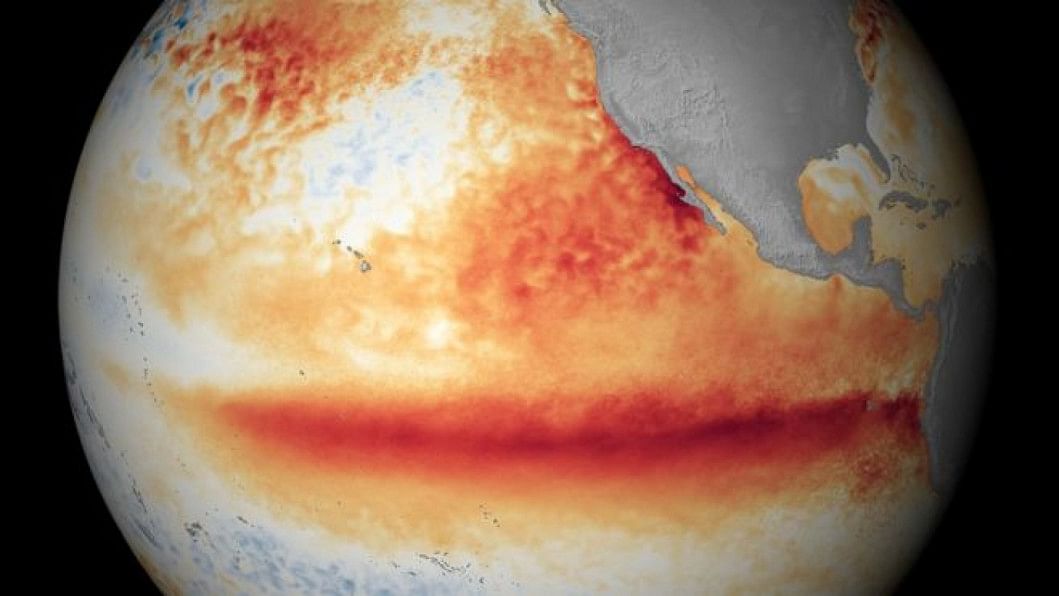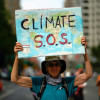El Nino weather 'could be as bad as 1998'

The US space agency Nasa has warned that the effects of the current El Nino weather phenomenon could be as bad as those of 1998, the strongest on record.
That El Nino played havoc with world weather systems and was blamed for several extreme weather events.
The current El Nino has been linked to several floods and unusually warm conditions in the northern hemisphere.
The phenomenon sees warm waters of the central Pacific expand eastwards towards North and South America.
El Nino, which occurs every two to seven years, usually peaks late in the calendar year, although the effects can persist well into the following spring and last up to 12 months.
Nasa says the current El Nino "shows no signs of waning", based on the latest satellite image of the Pacific Ocean.
It bears "a striking resemblance" to one from December 1997, the agency says, "the signature of a big and powerful El Nino".
This year's El Nino has been linked to the worst floods seen in 50 years in Paraguay, Argentina, Uruguay and Brazil.
The floods there have forced more than 150,000 people from their homes.
More than 100,000 of those have been in the Paraguayan capital Asuncion alone.
In the US, 13 people have died in the US state of Missouri as a result of flooded rivers after tornadoes and storms hit the region.
A five-mile (8km) section of the Mississippi River near St Louis was closed to vessels as a result of the "hazardous conditions" that have been caused.
As both droughts and floods continue, the scale of the potential impacts is worrying aid agencies.
About 31 million people are said to be facing food insecurity across Africa, a significant increase over the last year.
Around a third of these people live in Ethiopia, where 10.2 million are projected to require humanitarian assistance in 2016.
Aid agencies like Oxfam are worried that the impacts of the continuing El Nino in 2016 will add to existing stresses such as the wars in Syria, South Sudan and Yemen.
They say that food shortages are likely to peak in Southern Africa in February, with Malawi estimating that almost three million people will require humanitarian assistance before March.
El Nino has also been cited as a factor in the floods that have hit northern parts of the UK, forcing thousands from their homes and leaving thousands more without power.
Storm Frank, which is expected to bring fresh rain and flooding to the UK this week, is part of a weather system which could see temperatures at the North Pole 50F (27C) higher than normal for this time of year.
Higher temperatures than the seasonal average have been noted in many parts of Europe and the US.
Average temperatures on Christmas Day in France were the second highest on record, just below those of 1997.
The mild weather has forced farmers to harvest crops such as salad, strawberries and asparagus early, with reports of large amounts of produce going to waste.
Desperation in one French ski resort at the lack of snow led to 100 tons of snow being airlifted in by helicopter.
In Italy, experts say the unusually calm and dry weather has exacerbated pollution over the cities of Milan and Rome.
By contrast, in Mexico El Nino is being blamed for freezing temperatures in the north of the country, with snow seen in parts of the Sonoran desert for the first time in 33 years. Three deaths have been blamed on the cold in Sonora state.

 For all latest news, follow The Daily Star's Google News channel.
For all latest news, follow The Daily Star's Google News channel. 








Comments